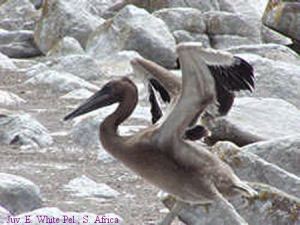Update, May 04, 2018: I have found a couple of images of young birds from Feb/March that offer an explanation for the leg color seen in my photos: looking at the two images below, it seems that the outer side of the leg is dark gray while the inner part is flesh-toned:
Iran 21st February 2018 - rightmost bird.
Iran 24th March 2016 .
n has
Update, October 30, 2013: I have just been notified that the eBird reviewer for the Middle East Region has accepted this as the first record for Bahrain.
This pelican was photographed by Martin Reid in Bahrain on March
4, 1999. No notes were taken in the field (the full significance
was not realised at the time, plus the bird flew after just a
few minutes), but my analysis of these images lead me to conclude
that it is a Dalmatian Pelican. There are four records of White
Pelican for Bahrain, but no records of Dalmatian (despite a historic
breeding site being directly across the Gulf, in Iran). Recently
I've discovered that small flocks of Dalmatian Pelicans were found
wintering along the lower Gulf and Indian Ocean coasts of Iran
in Feb 1999 (Philippe Dubois survey report.) BTW the uncropped
images clearly show a provable location in Bahrain (in fact I
took a local birder there to look for the pelican - unsuccessfully
- later that same day.)
I'd be grateful for some feedback on this bird:- is it identifiable?
if yes (and presuming it's not an E. White), are these images
and details good enough for a first country record?:
FYI the gulls in these pics are mostly Slender-billed (larus
genei) with a few Black-headed (L. ridibundus); these
four images are crops of the only photos I got - you can see that
it flew off while I was watching it, and despite searching it
was not seen again:

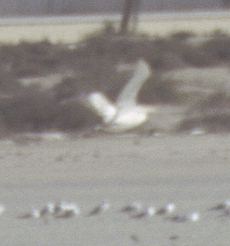
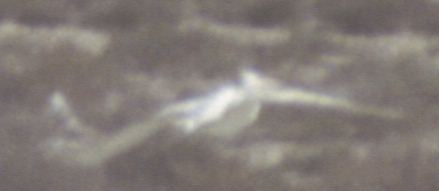

Here are enlargements of the best two images, with the lighting
adjusted to reveal critical detail - all adjustments were made
to the whole image, and no selective editing was done:

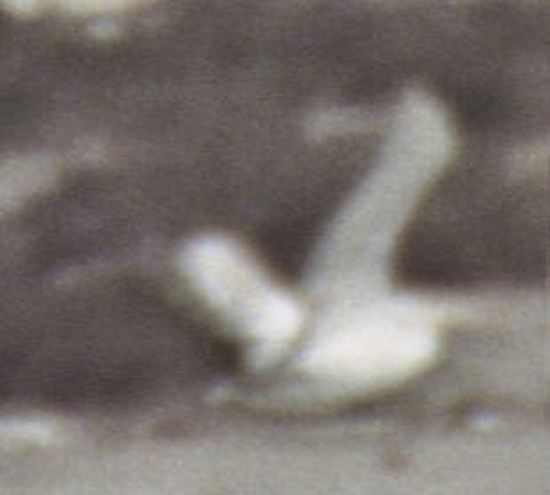
I feel that the shape of the back of the head, shape of the forehead
feathering (relative to the angled position of the head), whitish
color of the flight feathers from below, and blackish legs (but
see below*) are very strong pointers to Dalmatian. All these features
would seem to rule out E. White Pelican, but what about Pink-backed?
The leg colour, all-white underwing, and overall size compared
to the L. genei do not fit Pink-backed, plus it must be
considered much less likely (yet possible) than Dalmatian, given
the known ranges. - I would greatly appreciate informed
comment.
*: The apparent leg colour on the standing bird:-
the sunlit leg looks pinkish-white while the leg more in shadow
looks dark blackish - even the lower part that is lit by the sun
looks dark grey, with no colour. Also note in the above flight
photo that while the bill shows much color, the leg again looks
blackish (see comparison image below). Leg colour is often
distorted even in original photos and again in the scanning/displaying
process (e.g. gull legs can look much more pink-toned than they
did in real life). I found a published photo of a standing Dalmatian
(picture 294 in Harrison's photo version of "Seabirds of
the World") that shows the legs can look whitish in sunlight
- I've reproduced it here to demonstrate this effect:

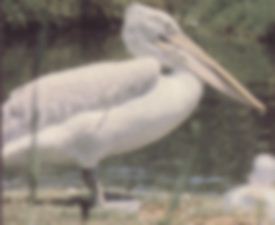
Here I've placed a small version of the Bahrain bird in with some
comparison images - all vagrant Dalmatians from Japan - gleaned
from the WWW (if you see your photo here and do not want it used,
please email and I'll remove it immediately; I reproduce them
only to further the identification process); note the apparent
leg colour in the first two images:
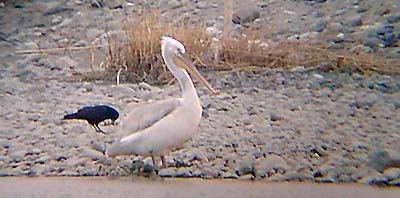
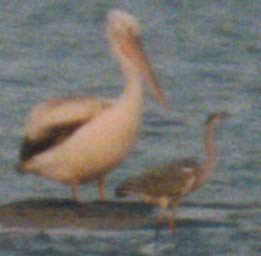
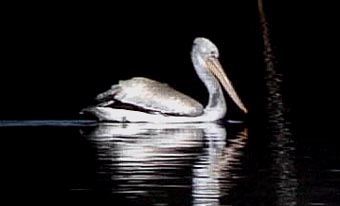
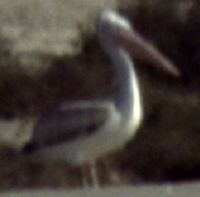
Here's another Dalmatian from Japan, providing a flight comparison
(especially bill and leg, compared to the Bahrain bird)


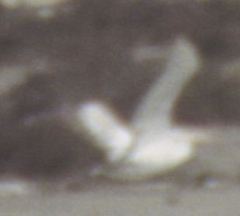
The following image of Dalmatians from Europe shows how the whole
underwing can appear whitish, at certain angles:

The following image shows a yet-to-fledge E. White Pelican, demonstrating
how black is the underside of the flight feathers even when juvenile:
